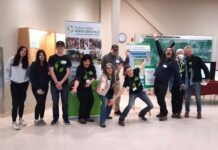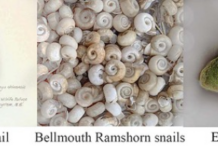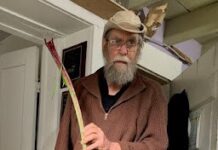by Fred Schueler, Fragile Inheritance Natural History
“The El Niño–Southern Oscillation is a climate phenomenon that exhibits irregular quasi-periodic variation in winds and sea surface temperatures over the tropical Pacific Ocean. It affects the climate of much of the tropics and subtropics, and has links to higher latitude regions of the world” (wikipedia). Recent El Niño variation is most likely linked to global warming, and this past winter’s warmth is linked to a strong El Niño.
Ever since the 1980s, we’ve noticed that in El Niño springs, Wood Frogs tend to have a disrupted breeding season, which results in eggs freezing after being laid in flooded ruts and other unsuitable sites. This spring, we’re not following any populations where we could likely observe mislaid eggs, but we did have choruses of Wood Frogs and Chorus Frogs calling before the March 17 to 25 March cold snap which froze over the breeding ponds.

On March 8, Jeffrey Ethier, from Vance Trudeau’s lab at the University of Ottawa, had heard “a few Chorus Frogs calling in the flooded field just by Bolton and Hares Hill roads… Went to the ditches by Merrickville on County Road 15… Saw a few salamanders, 1 female Chorus Frog and a Leopard Frog.” This was a full week earlier than we have had calling before (15 March in 1995, 19 March 2010, and 16 March 2012). On March 4, we found that two Leopard Frogs had overwintered in a shallow pool in our backyard, where frogs had died when the pond froze in the 2022-2023 winter, and on March 15, there was a substantial movement of Leopard Frogs across County Road 18, just north of the Bishops Mills Cemetery, again the earliest such movement we have observed.
Then, from March 21 to 26, an extreme El Niño cold snap set in, with temperatures down to -11°C, and ice cover on the vernal pools where the frogs breed. Climatologist Phil Chadwick writes about effects of global warming: “Spring is the time of cold lows in eastern Ontario with the cold trough. Expect heavy rain separated by drought. Sounds crazy but the weather will become more extreme and binary in nature – either too dry or too wet. Goldilocks’ weather is a thing of the past.”
Calling by Wood Frogs, Chorus Frogs, and Spring Peepers resumed on March 27, but locations and proportions of species were unusual compared to the traditional “Goldilocks” spring when warm rain gradually melts the snow, and the Amphibians can move across a moist landscape from their hibernation habitat to their breeding sites. Back in 2001, I wrote “warmth, rain, ponds, and freedom from predators are so often absent or unpredictable, that every observer solemnly proclaims of every spring: “This is the most bizarre year yet” but since then, springs have been even more irregular.
Since we’ve been observing Amphibians in Bishops Mills, we’ve seen declines and some signs of recovery in Toads (every 4-5 years), Chorus Frogs (early 1990s), and Leopard Frogs (2013-2020). The main thing that can be done to offset future declines from an increasingly changed climate is to provide fish-free “vernal” breeding ponds. When South Nation Conservation dug such pools in the Robert Graham Conservation Area near Glen Stewart, in November of 2014, frogs and salamanders found the ponds the next spring, and it has since had similar successes in pools dug elsewhere on its lands.
We dug a vernal pool on our land south of Bishops Mills in 1983 which has provided breeding habitat for a population of Blue-spotted Salamanders, and I’ve staked out another low area where we’ll be holding a shovel-&-wheelbarrow bee later this spring to dig a broader pool which we hope will sustain a population of Chorus Frogs.








